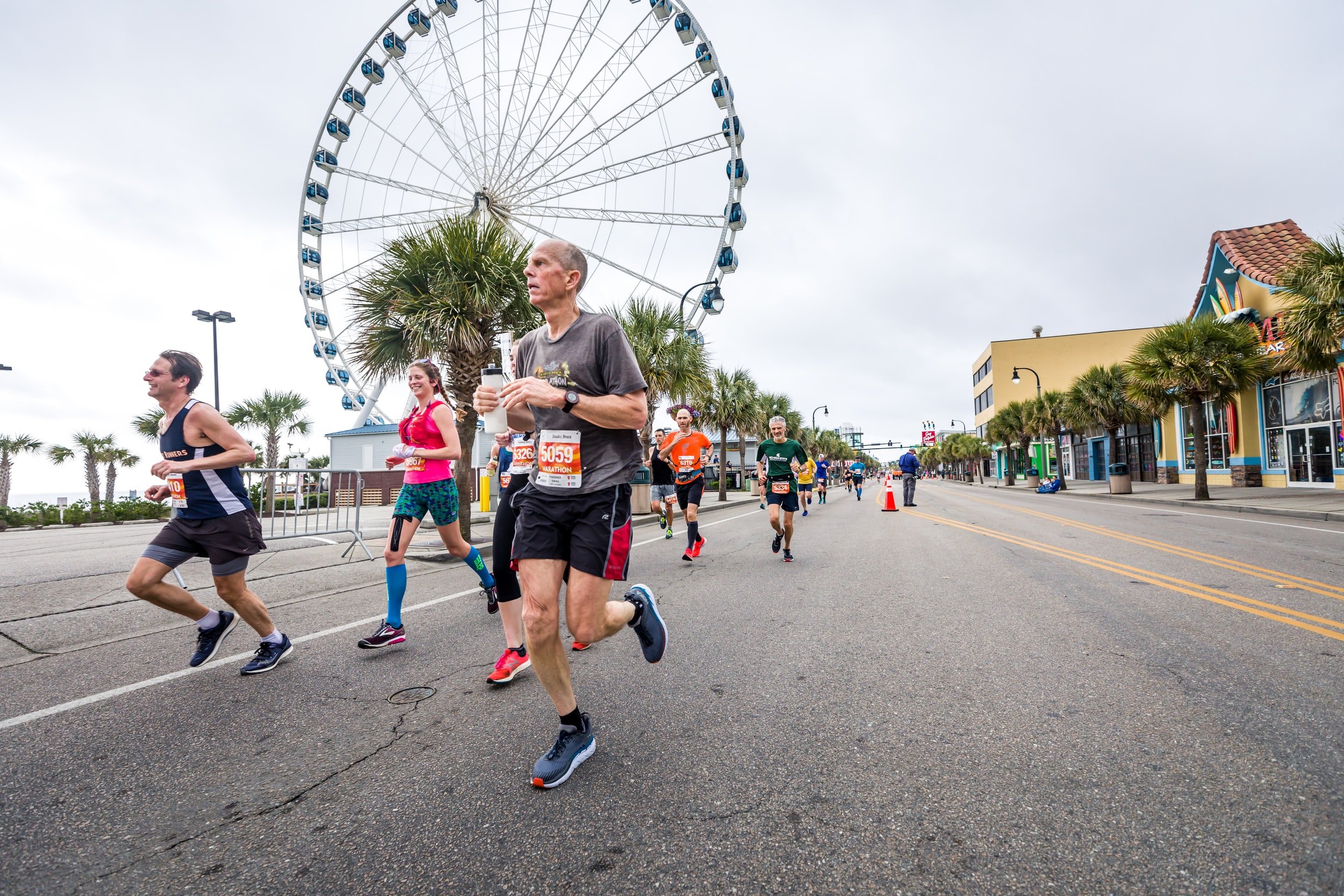A new year, and how running more than 15 miles per week might be hurting you.
“Floating” to the finish at the frigid turkey trot 2 years ago.
(Keep reading, it gets better!)
I’ve never been a fan of New Year’s Resolutions; if something is worth changing, I don’t want to wait until some relatively arbitrary date in the future. Maybe some would call me impulsive, but if it sounds like a good idea, I’ll jump on it while I’m motivated. Having said that, many people are motivated by a fresh start in the new year, and even for me, there’s something about the end of the year (or decade, in this case) that leads you to reflect on the past year – and hopefully, course-correct for the future.
As I reflect back on my own history, one of the most obvious themes I have found is that I need to carve out more time for myself to stay healthy. For years, I have been a part-time runner, and I have almost completely chosen running as my form of exercise because it’s quick and easy. So, my average mileage, “when I have time to run,” averages out to somewhere between 10-20 miles per month. Yes, month. At my finest, it’ll be two 5Ks per month (because if I pay for it, I have to do it!), and maybe 2-4 additional runs during the “off” weeks. An occasional crossfit class (Crossfit Takeoff does a great job of teaching form over reps. I really do love these guys and wish I’d make more time to go! They have a great deal right now for first timers, give them a call!). And (shockingly), every time I felt good about running and increased my mileage, I sustained a muscle injury of some kind.
Many of you are reading my training regimen and shouting, “No! You can’t train that way!” Any many others might be shrugging and saying, “Yeah, sounds about right.” Many more of you might feel like I’m describing the story of your life.
One of the many important things I learned from the Certified Running Gait Analyst course I went to in November is that you can hide a lot of running faults if you run less than 15 miles per week. Your body can handle a fair amount of incorrect loading. But once you ramp up to 15-20 miles per week, poor mechanics start to catch up with you. In my case, every time I ran more than 10 miles/week, my training over the past few years led to major collapsing gait and overstriding mechanics – a terrible (and very common) combination!
I connected these dots for myself during that fabled weekend in November, and I promised myself to change a few things (which I’ve mostly stuck to!). My New Year’s Resolutions, if you will, started in mid-November, and will continue to evolve during the year. Here’s my list of working goals:
“Your sport doesn’t keep you in shape, you need to stay in shape for your sport!”
I will no longer exercise “when I have time.” Now that my children are sleeping through the night most of the time, I will wake up earlier and exercise regularly.
I will actually cross train. My exercising will consist of at least 50% strength training. This was another shocking (and obvious) concept brought to my attention. Running should really only be ¼ of your exercise routine! I chose running as my sole exercise because it was easy to do so. As I have told every athlete, young and old) that has graced my office: Your sport doesn’t keep you in shape, you need to stay in shape for your sport! Running is really no different. While running itself is a great exercise, there are a lot of muscles required to make it happen correctly, and they get lazy if you let them.
I will be okay with whatever I can do. There are variables I can’t control. I can’t help it if my kids don’t let me sleep. I can’t help it if work gets too crazy and I need a break. I will allow my body to rest, but I won’t let it consume me. I won’t feel guilty, and I won’t rest for longer than I need to.
I will run SLOW more often to focus on form. One of the best tips I got this year was highlighted in a previous blog. Slow down! You can’t focus on form and mechanics if you’re running too fast. As he stated, you wouldn’t go to a black diamond run to work to perfect your turns on the ski slope, you’d work at a lower level. Running is no different.
I will run FAST other times because it’s fun. I will still try to PR every time I run a 5K – unless my body doesn’t want to!
I will ENJOY a 10K. Just because. Because I said I’d never run one again and Denise D. (a RAPster celebrity many of you know!) said I would, and she was probably right!
Bonus picture. Running with friends is fun. Photo bombing their finish line pic is more fun!
Bonus: I will do my new favorite 6 Most Important Exercises for Runners at least 5 days per week! Stay tuned for next week’s blog to learn more!
Here’s a comparison of my run stats from November and again 1 month later. Stats were obtained from DorsaVi wearable sensors.
November showed higher ground reaction force (GRF) suggesting collapsing at midstance, and low IPA suggesting caution at heel strike (due to pain, in my case). I also had asymmetry from 1 side to the other.
My December assessment showed improved control at midstance (lower GRF), more normalized IPA, and symmetrical gait mechanics. Yay! (Ignore the 3rd test here, I was messing around with running drills).
Thanks for a great 2019. We look forward to helping you achieve your goals in 2020. Why not start with a formal Running Gait Analysis? I promise it will be fun! 😊




